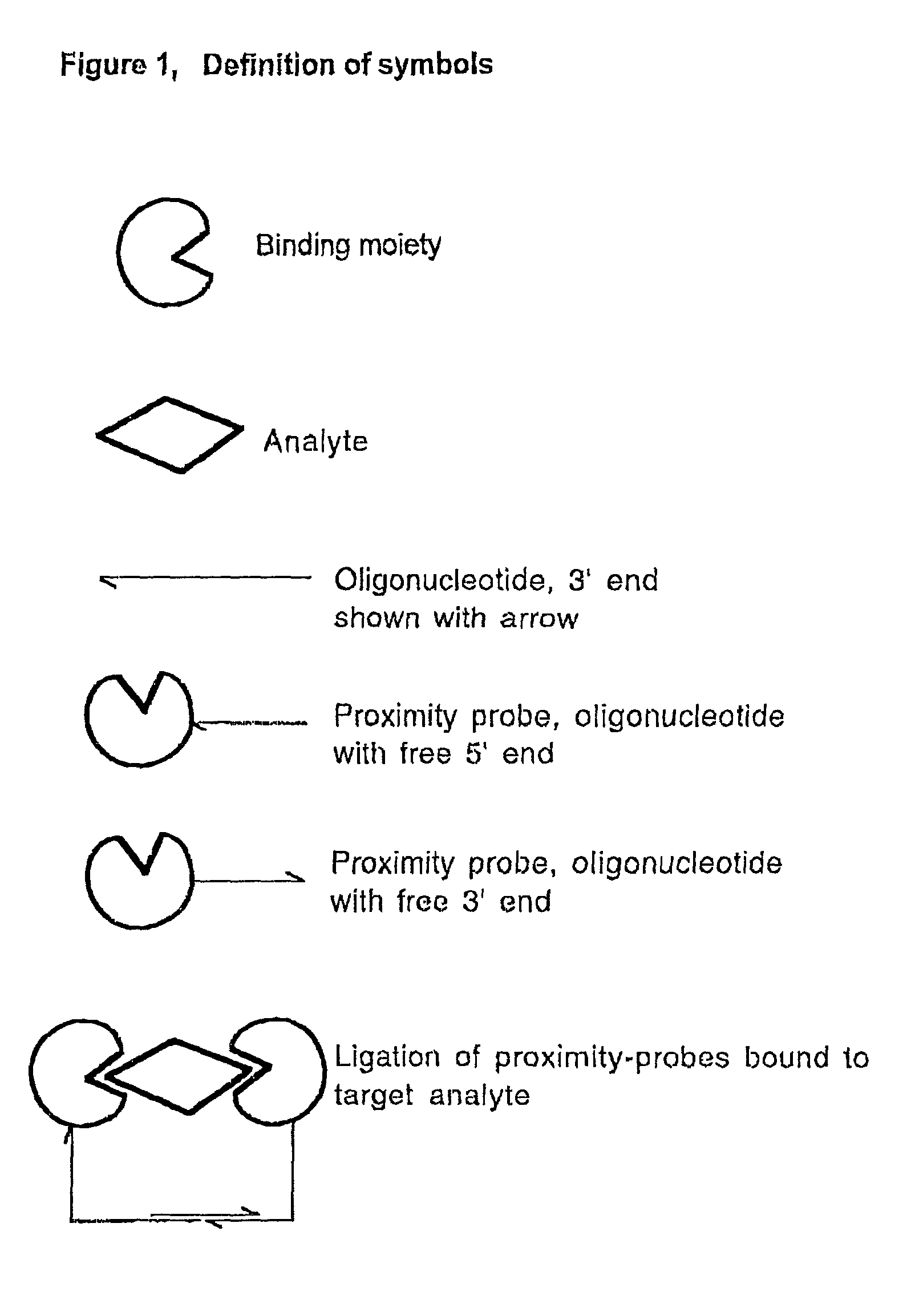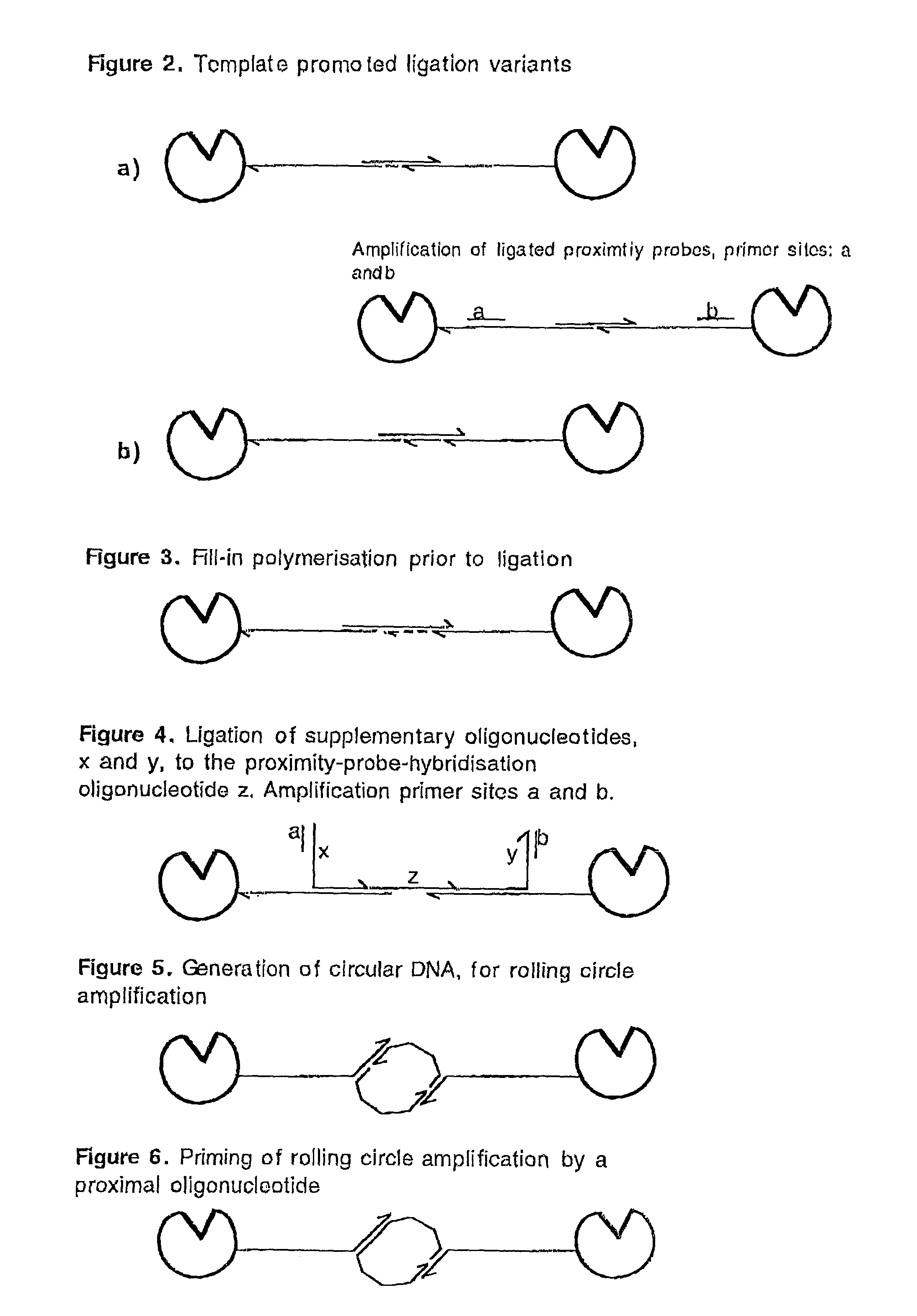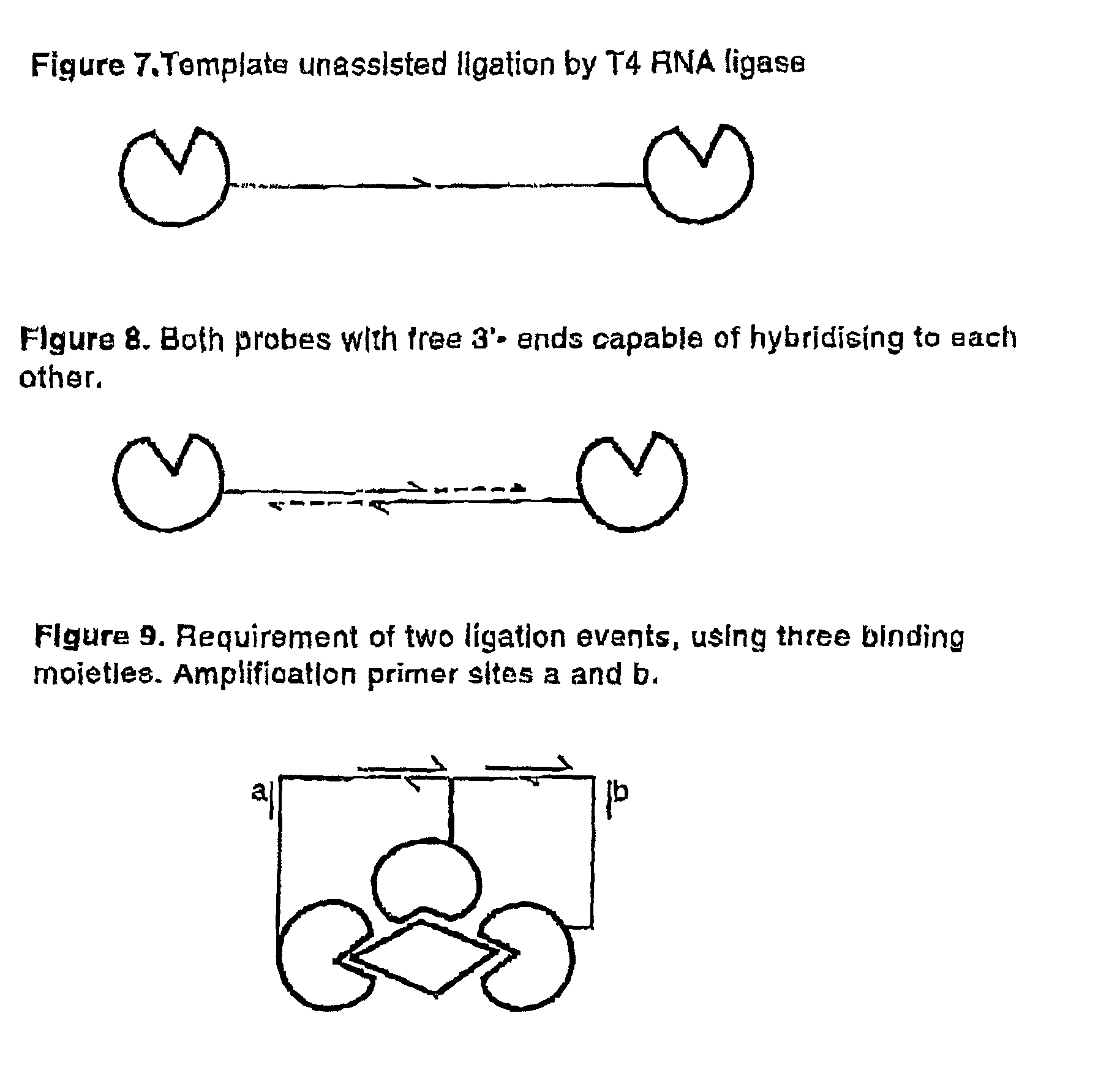Methods and kits for proximity probing
- Summary
- Abstract
- Description
- Claims
- Application Information
AI Technical Summary
Benefits of technology
Problems solved by technology
Method used
Image
Examples
example 1
[0071]PDGF Detection using SELEX Derived Aptamers
[0072]An example of proximity probing is an assay capable of the detecting platelet derived growth factor BB (PDGF BB). In this case the binding moieties which bind the protein at two sites are Selex (Systematic evolution of ligands by exponential enrichment)-derived aptamers (16). These are single stranded oligonucleotides selected repeatedly from very large random combinatorial libraries for affinity towards a target protein, in this case the B-chain of PDGF (17). The aptamer sequences are easily extended to contain additional polynucleotide sequence besides the binding moiety. This extension contains the reactive functionality mentioned above. One aptamer has a 5′ extension ending in a 5′ phosphate group and the other aptamer has a 3′ extension ending in a 3′ hydroxyl. These two extensions may be united through a ligation reaction if they are hybridised to a template strand (FIG. 10).
[0073]The efficiency of such a ligation reaction...
example 2
Universal Proximity-probes
[0083]When detecting an analyte the proximity-probes must not always bind to the analyte itself, but can instead bind via a first affinity reagent. In the case of an analyte with two binding sites, the first affinity reagents bind the analyte and the proximity-probes bind to these primary reagents (FIG. 13). This strategy has advantages when designing universal proximity-probes here exemplified with antibodies as target-binding moieties.
[0084]The laborious conjugation of nucleic acid sequences to various antibodies or other binding moieties can be overcome by making universal proximity-probes. These would comprise a secondary pair of binding moieties, each one capable of binding once to the Fe region (constant region) of a primary binding antibody pair. The Fe region is constant for many different antibodies of various specificities. So, the nucleic acids are conjugated to these secondary binding moieties, and used universally for the detection of many diff...
example 3
Competitive Proximity-probing for Analytes with Only One Binding Site
[0085]It is not always the case that two binding moieties are available for an analyte. This can be overcome by using a competitive assay. Herein, a putrified amount of the analyte itself is conjugated to a nucleic acid and the one existing binding moiety is conjugated with the other reactive nucleic acid. When these two conjugates are permitted to react in a sample mixture containing an unknown amount of the analyte, the non-conjugated analyte of unknown amount in the sample will compete for binding to the binding moiety of the proximity-probe thereby decreasing the probability of the conjugated nucleic acids reacting. The signal from the reaction is in this case inversely proportional to the analyte concentration.
PUM
| Property | Measurement | Unit |
|---|---|---|
| Affinity | aaaaa | aaaaa |
| Interaction | aaaaa | aaaaa |
Abstract
Description
Claims
Application Information
 Login to View More
Login to View More - R&D
- Intellectual Property
- Life Sciences
- Materials
- Tech Scout
- Unparalleled Data Quality
- Higher Quality Content
- 60% Fewer Hallucinations
Browse by: Latest US Patents, China's latest patents, Technical Efficacy Thesaurus, Application Domain, Technology Topic, Popular Technical Reports.
© 2025 PatSnap. All rights reserved.Legal|Privacy policy|Modern Slavery Act Transparency Statement|Sitemap|About US| Contact US: help@patsnap.com



